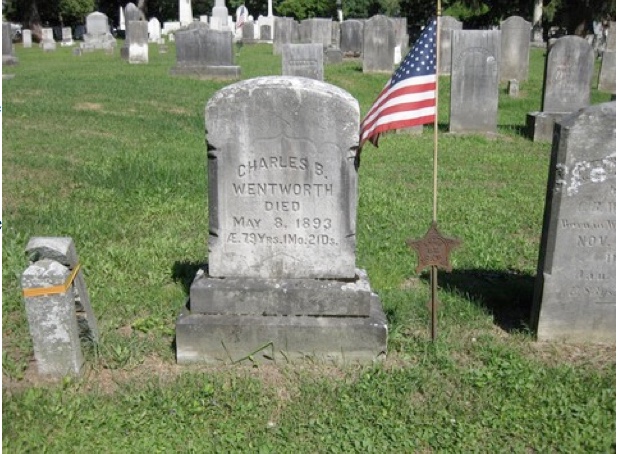Collect Day #30, THE WENTWORTHS
O Gracious, Creator, Father of us all: please help us remember with honor and gratitude the many sacrifices that were made by the Wentworth family as they lived in slavery while aiding in the creation of institutions of learning which were not open to them. Let us find ways to repay their families for their willingness to serve in the military for a country that did not recognize them as citizens. We ask this in the name of your Son, the one who saw no differences among human beings, Jesus Christ, our Lord. Amen

DAY #30, April 9, 2019
HANOVER, NH
THE WENTWORTHS
Deborah Knowlton
There is a multi-generational family of Wentworths who lived back and forth across the Connecticut River in the towns of Hanover, NH and Woodstock, VT. The family tree begins with the 1802 marriage in Londonderry, NH, of Jane Barrett (1789-1850) and Charles Wentworth, who had been enslaved by John Wentworth, the last colonial governor of New Hampshire. Charles and Jane moved to Hanover, where Charles worked as the janitor at Dartmouth College, and Jane became known among Dartmouth students as Aunt Jenny, the wash-woman and nurse in sickness. (Massachusetts Historical Collection, quoting Dartmouth graduates.)
They had six children. Of these children, Charles B. Wentworth, a barber, married Mary Jane Little in 1836. They lived in Woodstock until 1880, raising four children, including Charles B. Jr., and William, who also became barbers. The senior Charles, in 1863, enlisted and served during the Civil War as an officer’s waiter; he was called “Old Duke.” His son, Charles B., and his grandson, Charles B. Jr., also joined the military during the Civil War. Charles B. Jr. has a headstone in River Street Cemetery in Woodstock noting his service. William Wentworth served as a boatman in the military at a different time.
Other slaves bearing the name Wentworth lived in Hanover before Charles and Jane. These slaves came to town with Dartmouth’s first President, Eleazar Wheelock, and his wife, Sarah Davenport.
“Madam Wheelock arrived in late September (1769), coming in an English coach,” according to a 1957 Dartmouth alumni magazine article. “With her came her children, thirty students, three Indians, and four Negro slaves.” Among them may have been Jinny Wentworth, formerly enslaved by Governor Wentworth’s family. She had a reputation of piety, unlike her son, Denison, a local barber, known as a “vicious” man. He was driven out of town in 1854.
Craig S. Wilder, in his book Ebony and Ivy also reveals that corpses of people enslaved by Wheelock were used by Dartmouth Medical College. Wheelock’s personal doctor arranged for the skeleton of one enslaved man, Cato, to be wired together and displayed for study. “We have to think of colleges (and their leadership) as animate; as actors in the colonial world (in its deep and painful history) and in the creation of the nation.” notes Wilder.
